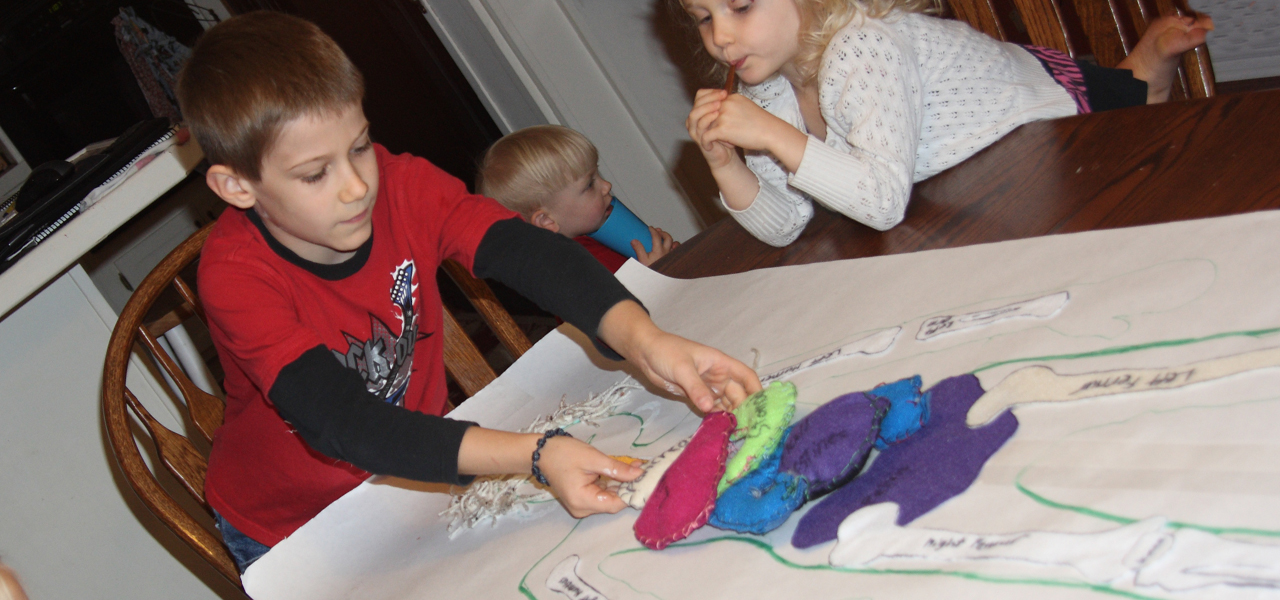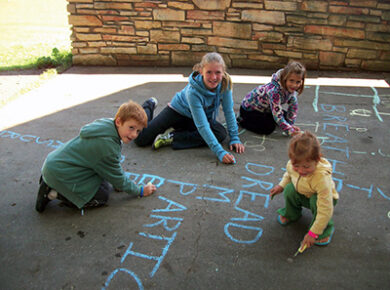Homeschooling Students With Different Learning Styles

You’ve heard about learning styles, but what are they? And how can you use learning styles to enrich your homeschool?
The four main learning styles
There are four main learning styles: visual, auditory, kinesthetic, and reading/writing.
Visual learners learn best by seeing. A visual learner remembers details in images, notices patterns and shapes, and learns well from pictures, diagrams, and demonstrations. Visual learners often have a hard time “getting it” when listening to verbal instructions or an audiobook.
Auditory learners find it easiest to absorb information when hearing it and responding verbally. An auditory learner understands verbal instructions best and remembers stories read out loud to him better than stories he has read himself.
Kinesthetic learners learn best by doing. A kinesthetic learner likes to make things with his hands, loves physical activity, and remembers things best that he has participated in physically.
Reading/writing learners learn best by—any guesses?—reading and writing. This kind of learner remembers things best when he has read them on the page and prefers to communicate by writing rather than by speaking.
Learning styles might explain a lot of things you’ve already noticed about your children. For example, why does Rita read every book she can get her hands on, while Karl doesn’t get excited about a book unless he does a hands-on project related to it? It could be that Rita is predominantly a reading/writing learner, and Karl is predominantly a kinesthetic learner.
Practical tips by learning style
Click here to download a detailed handout with practical tips for adapting lessons to each style of learning.

Try to make use of all four learning styles
Most children learn through all four methods of learning but have one or two dominant learning styles. For example, my primary learning style is reading/writing. I also learn well through visual and kinesthetic methods, but auditory learning is challenging for me. I have to make a special effort to understand when listening to an audiobook or a lecture.
With practice, I have become much better at auditory learning. I’ve also learned ways to compensate for my weak auditory-learning skills. For instance, when listening to a professor’s lecture in college, I would take extensive notes. The process of writing the notes helped me organize and understand the information I was hearing, even if I never referred to the notes later on.
Just because children have different learning styles doesn’t mean that if you have an auditory learner, you should switch to reading everything aloud to him. A child needs to be able to learn through many different methods because he will often be in situations where he won’t be able to choose how he wants to learn a necessary piece of information.
For example, the owner’s manuals of cars are not available in auditory formats, and college professors’ lectures are not usually available in written formats. With practice, children can develop their abilities to learn through methods that don’t come naturally.
Encourage all of your students to use as many of their five senses as possible in learning—this will enrich their experience, help you discover what their primary learning styles are, and help them develop their non-primary learning styles.
Make challenging subjects easier
If children should be able to learn through all different methods, why is it useful to know about learning styles? One reason is that you can adjust a challenging subject so the child can approach the topic through his primary learning style. For example, a kinesthetic learner who struggles with math might begin to excel with a hands-on program that uses manipulatives. This child will still have opportunities to practice the other methods of learning (visual, auditory, reading/writing), just not in the subject he struggles with.
Make school more enjoyable
An awareness of learning styles can also be key to making learning more enjoyable. Oftentimes students are perfectly capable of learning through a non-primary learning style, but the subject doesn’t “come alive” for them without the addition of elements that appeal to their primary learning style. For example, Veronica the Visual Learner can understand history books printed in black and white without illustrations. But she will enjoy her studies much more with full-color history books that feature illustrations, maps, and diagrams. Similarly, Karl the Kinesthetic Learner is quite capable of learning science from a textbook, but the concepts seem dull and uninteresting until he completes hands-on science experiments.
Adapt your teaching style
Knowing about learning styles can also help you adapt your teaching style to your children’s needs. With Rita the Reading/Writing Learner you might be able to hand her the workbook and let her read the directions herself. In contrast, Adam the Auditory Learner needs you to read or explain the directions orally. Adam’s need for you to introduce the lesson doesn’t mean he is less intelligent than Rita; it just means that written directions are not his forte.
Of course, Adam still needs to move towards the goal of understanding written directions because this is part of becoming an independent learner. You can help him develop this skill by asking him to read the directions to himself first (reading them aloud might help) and then tell you what he thinks they mean. Praise him for his effort, and discuss the directions together until he fully understands the lesson. Over time, Adam will develop his ability to understand written directions to the point that he will no longer need your assistance.
Putting it together: organizing the right curriculum for your unique learner
The key? Understanding your child’s unique learning style and introducing activities that reinforce his learning and development. By leaning into your child’s strengths and challenges, you’ll ensure he’s best absorbing and applying lessons and, with that, building confidence, clarity, and a passion for learning.
At the same time, don’t lean exclusively on learning style-specific methods. Especially as your child gets older and takes on more complex academic challenges, he’ll need to be equipped to handle information and insights no matter how they’re delivered. As he progresses into upper grades and, from there, college and career, he’ll need to be able to learn from classes, assignments, and general feedback, regardless of how it’s delivered. With that in mind, be sure to incorporate activities and approaches outside of his immediate comfort zone to change things up – and to ensure he’s ready for whatever comes next.
The photo at the top of this article was submitted by Sarah from Texas. In the photo, her son is finishing his “Human Body Felt Project” from Behold and See 4.
Related Blogs
If you enjoyed this article, you might be interested in the related articles below.
Favorites
Explore CHC’s top favorites! From art to literature, science to hands-on religion, CHC has materials to enrich every Catholic homeschool.



















